Review| Mary Poppins Returns – Finding Love in Loss
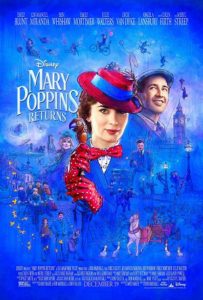 It’s been over five decades since Walt Disney brought author P.L. Travers’ practically perfect nanny to life in his magnum opus, Mary Poppins. Now, the company that bears his name continues the story in an all-new film fantasy, Mary Poppins Returns.
It’s been over five decades since Walt Disney brought author P.L. Travers’ practically perfect nanny to life in his magnum opus, Mary Poppins. Now, the company that bears his name continues the story in an all-new film fantasy, Mary Poppins Returns.
I’m a very big fan of the original film. In a lot of ways, Mary Poppins Returns does indeed capture the spirit of the first film, but it’s a pretty mediocre sequel. I could imagine it was very difficult to follow something as cinematically perfect as Mary Poppins. So I will give director Rob Marshall and his crew points for even attempting such a lofty goal.
While Mary Poppins Returns‘ narrative definitely has its share of problems, there is a very strong thematic spine underneath it – something that every person in this word deals with at some point in their lives.
SPOILERS AHEAD!
The Good: A Beautiful Film
 Mary Poppins Returns is a beautiful movie to look at. The costumes, lighting, and cinematography all work together in perfect synch to continue the first film’s storybook-inspired look and feel. It’s fanciful fantasy at its best.
Mary Poppins Returns is a beautiful movie to look at. The costumes, lighting, and cinematography all work together in perfect synch to continue the first film’s storybook-inspired look and feel. It’s fanciful fantasy at its best.
The production design, headed by Oscar-winner John Myhre, was particularly good. Myhre took the original’s bright and cheery Victorian palate and brought it to a logical evolution for a story taking place over two decades after the first film. The cheeriness is still there, but there’s also a heaping amount of darkness and grime, courtesy of the Great Slump (or Great Depression, as we Americans call it). It was a perfect metaphor for the cultural climate of the time, which made Mary Poppins’ colorful re-entrance into the Banks Family’s life much more striking.

There are some fine performances in this film, particularly from Emily Blunt as the titular magical nanny. She’s no Julie Andrews, but she certainly comes close (even made an excellent attempt to sound like Andrews). Blunt retained the poise and propriety that made Andrews’ star-making performance so charismatic and irresistible but added her own vulnerability to the character. Mary Poppins now had several quiet moments throughout the film where we saw her personal reactions to the children’s situations.
The other exceptional performances came from two veterans of classic Disney films: Angela Lansbury (the star of Bedknobs and Broomsticks as well as the voice of Mrs. Potts in the original Beauty and the Beast) and original Mary Poppins co-star Dick Van Dyke. Both of these legendary performers are 93 years old and still have that spark of magic about them. Seeing Van Dyke do a dance number instantly brought a smile to my face. And it was very surprising to hear Lansbury’s still-strong voice ring out with exceptional range. I hope I’m as dynamic when I’m that age!
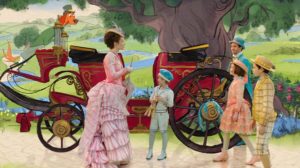 The animation scenes were just as ingeniously executed as the ones from the original film, and benefit quite heavily from the advances in technology since 1964. The style was inviting and interesting to watch, and I appreciated that all the characters were hand-drawn. The costumes for the sequence were intriguing, containing lines and shapes that looked as if they were drawn. They seemed to blend in with the scenes themselves. The sets and props also seemed to be drawn and I couldn’t tell where the physical props ended and the synthetic scenery began. It was seamless.
The animation scenes were just as ingeniously executed as the ones from the original film, and benefit quite heavily from the advances in technology since 1964. The style was inviting and interesting to watch, and I appreciated that all the characters were hand-drawn. The costumes for the sequence were intriguing, containing lines and shapes that looked as if they were drawn. They seemed to blend in with the scenes themselves. The sets and props also seemed to be drawn and I couldn’t tell where the physical props ended and the synthetic scenery began. It was seamless.
The Bad: A Sincere Misunderstanding
Though the film itself, in many ways, captured the spirit if the first film, there were some big problems that I couldn’t abide. I chalk this up to the modern filmmakers not really understanding what Walt Disney’s Mary Poppins was all about. I’m sure they saw the film, but they must have taken something from it that wasn’t there. They also played it safe, relying a bit too heavily on the format of the first film.
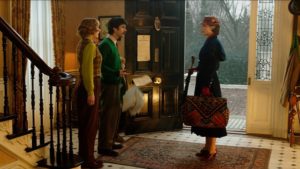
The main conflict of the story, the Banks Family possibly losing their home, made no sense when one simply remembered the plot of the previous film. The Bankses had owned 17 Cherry Tree Lane since at least 1910 (probably longer) and Mary Poppins Returns takes place at least 20 years after that. One would think that the mortgage had been paid off by then!
This rather large plot hole made the film’s villain, William Wilkins (played serviceably by Colin Firth), virtually unnecessary. He seemed so one-dimensional, only concerned with foreclosing on people’s homes. At times, he left me wondering why he wasn’t wringing his hands or twirling a mustache in fiendish delight.
The songs, written by Marc Shaiman and Scott Wittman, had a certain fun bounce about them, but there just wasn’t as much of an emotional tug or connection to the main plot as the iconic songs from the previous film had. The only one that succeeded in capturing that Mary Poppins magic for me was “Can You Imagine That,” Mary Poppins’ main theme for the new film (and even that was somewhat ruined by the overly-fanciful and CGI-infused bathtub sequence).
What made the Sherman Brothers’ classic songs from the original Mary Poppins so wonderful was their personal songwriting philosophy: keep songs “simple, singable, and sincere.” Though some come close, none the songs in Mary Poppins Returns capture all three criteria (some are singable, but not simple or sincere, etc.). There’s no clever and understandable wordplay a la “Supercalifragilisticexpialidocious” or simple sincerity like “Feed the Birds.”
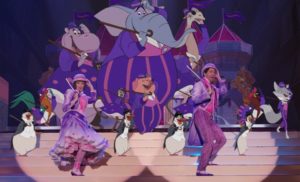 One of the hallmarks of Mary Poppins’ personality was that she remained herself, no matter what the magical circumstances were. Even when everyone else was laughing their heads off on the ceiling or prancing about on the rooftops of London, she maintained her dignity in her own refined (but still fun) way.
One of the hallmarks of Mary Poppins’ personality was that she remained herself, no matter what the magical circumstances were. Even when everyone else was laughing their heads off on the ceiling or prancing about on the rooftops of London, she maintained her dignity in her own refined (but still fun) way.
This was completely ignored during the “A Cover is Not the Book” sequence, as Mary’s whole personality changed from refined magical lady to bawdy music hall singer (complete with thick cockney accent) just for that one sequence. While the sequence itself was interesting to look at, it felt so out of place. It changed the demeanor of the character so fully that she wasn’t Mary Poppins to me anymore.
Lastly, most of the cast was perfect for their respective roles. But one was definitely not suited for his: Lin-Manuel Miranda. Though he has won many awards for his work on Hamilton: An America Musical, he is a thoroughly mediocre singer and actor. Miranda stands out like a sore thumb because he’s the only one devoid of any charm or charisma. That and his cockney accent was actually worse than Dick Van Dyke’s from the original.
Finding Life in Loss
 Like the first film, the story of Mary Poppins Returns revolved around a significant change of heart in the patriarch of the Banks Family – in this case, George Banks’ son, Michael, who was a small boy in the original film. Though Michael’s transformation wasn’t as impactful or emotional as his father’s was, it held the core theme of the film: dealing with loss.
Like the first film, the story of Mary Poppins Returns revolved around a significant change of heart in the patriarch of the Banks Family – in this case, George Banks’ son, Michael, who was a small boy in the original film. Though Michael’s transformation wasn’t as impactful or emotional as his father’s was, it held the core theme of the film: dealing with loss.
Before Mary Poppins’ return to their lives, Michael was struggling (understandably) with the recent death of his wife. He had become distant from his children, the seriousness of their situation preventing him from enjoying life as he had before. On top of all that, the family faced the very real proposition of losing their longtime home due to money troubles.
As the world itself is fallen, life is full of loss and heartache. The death of a loved one, particularly a spouse, is devastating. Though I thankfully haven’t experienced it myself, I have seen what it does to people in my circle. And we all have had our share of losses in our lives. In the Sermon on the Mount, Jesus talks about those dealing with loss, along with the anxiety that comes with not knowing what will happen after. He said that God will comfort those who mourn, but He also said that those who lose must go on living and look to God for strength.
“Therefore I tell you, do not worry about your life, what you will eat or drink; or about your body, what you will wear. Is not life more than food, and the body more than clothes?” Matthew 6:25
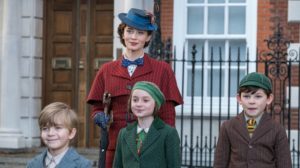
Michael had focused on all he had lost (or could potentially lose) and forgotten all he still had: his children, sister, and even Mary Poppins. His life wasn’t over because of his wife’s death and there was still hope and magic to be found in what was still left. He had to find the strength to go on living for the sake of his children. As such, Jesus asks us to do the same, but He will be the source of our strength, not magic.
In the context of the story and theme, it may have been more emotionally impactful if the Banks Family had actually lost 17 Cherry Tree Lane at the end of the film (the family home was saved by a last-minute intervention by the elder bank partner played by Dick Van Dyke). It would have driven the theme of the film home and made Michael fully embrace his new outlook on life with no turning back. But I guess they had to mirror the first film in that way as well.
God can take all situations, even the terrible ones, and have them bear good fruit. A loss strengthens our character and makes us more dependent on God for our daily needs. Grief is expected and perfectly fine in the Lord’s eyes (even Jesus wept over the death of his friend, Lazarus). But we must also find the courage to continue living. God isn’t done with us in this world, and we must be open to following His plan for our lives.
The Final Word
Mary Poppins Returns was an enjoyable experience…to a point. It followed the legacy of a film so beloved that it may have been impossible to satiate the expectations of longtime fans of the classic film such as myself. This attempt at a sequel invited comparison. And compared to Walt Disney’s Mary Poppins, the film is very so-so.
The story of Michael Banks’ transformation is one with which we can all relate. Each one of us has experienced some kind of loss in our lives – events which can trigger anxious feeling about what will happen next. While it is perfectly understandable to mourn what we have lost, Jesus says that we are to go on living and that He will give us the strength to do so. All we have to do is look up to Him and ask.
“And we know that in all things God works for the good of those who love Him, who have been called according to His purpose.” Romans 8:25
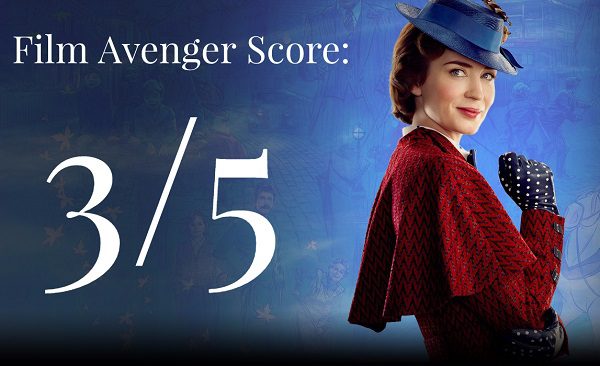


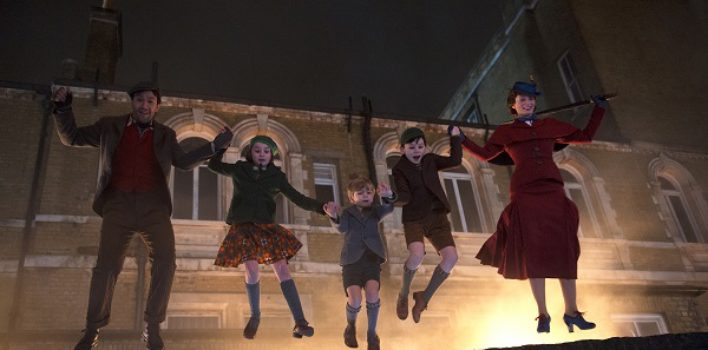
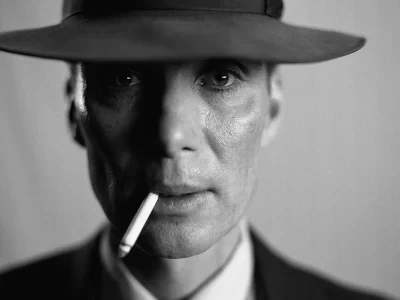





Pingback: Oscar Nominations 2018 – Winners and Losers | Reel World Theology